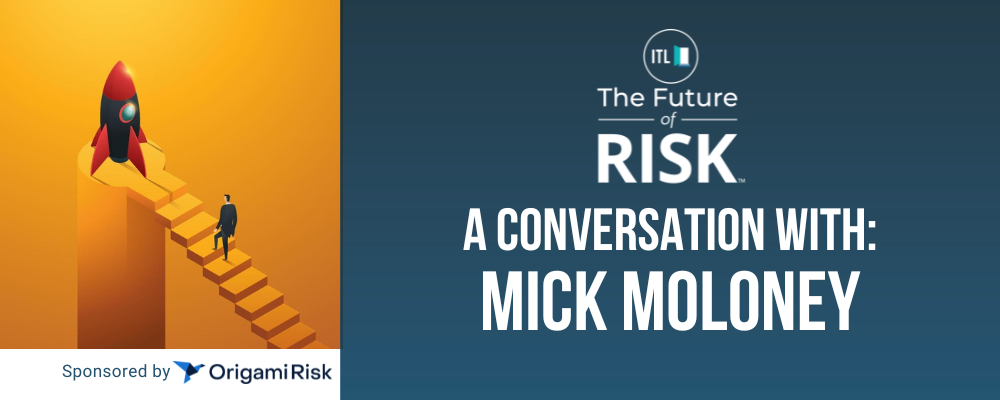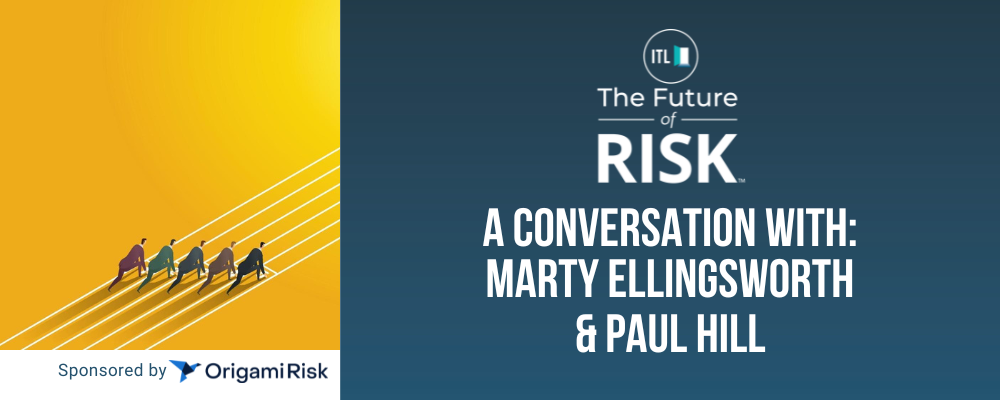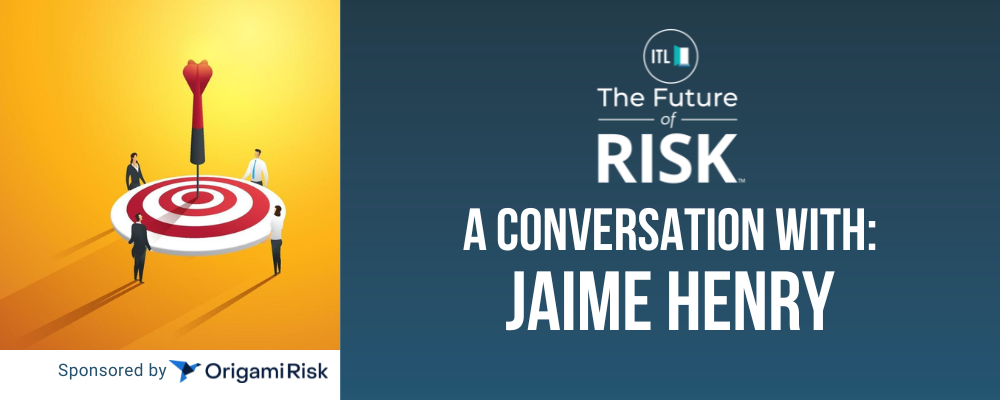 | Mick Moloney is a Partner at Oliver Wyman, based in New York, and is the Global Head of the Insurance & Asset Management. Mick spends his time working with leading insurers, asset managers, and advisory firms on a range of strategic and execution topics with a particular focus on growth, innovation, and efficiency in retail and institutional life and retirement markets. Mick has over 25 years of experience in financial services. Prior to joining Oliver Wyman, Mick spent 15 years at Mercer where he was a Senior Partner and global head of the firm’s Financial Strategy Group (FSG) – the team that leads on risk advisory work for large clients. In addition, he served as a member of Mercer Investment Consulting’s Global, US and European Operating Committees and the European Operating Committee for the firm’s Retirement, Risk and Finance business. He is a Fellow of the Institute of Actuaries in the United Kingdom, a Fellow of the Society of Actuaries in Ireland, an Associate of the United States Society of Actuaries and has an Executive MBA from the Smurfit Business School, University College Dublin. |
Paul Carroll
You've been on a thesis for a while, and I’ve wanted to explore it with you for a long time. That's this idea of private equity getting into life insurance as a way to grab assets and then invest them. Would you lay that out for me?
Mick Moloney
Sure. As you probably know, Paul, it's not a new phenomenon, if you trace the history of Apollo Athene, which is kind of the poster child of what we're about to talk about. I mean, the Athene piece of that is probably from the late 2000s in terms of when that initial transaction happened. I may have that off by a couple years or so. [Apollo established Athene, a provider of annuities and retirement services, in 2009, then, in 2022, acquired the 65% of the equity that it didn’t already own.]
We're talking something that's been playing out for over a decade. The critical piece is that that trend has been accelerating materially.
It took a little while for the dynamic to kind of come together. What has been happening over the whole period of time, just to kind of set the broader scene, is that, as you know, as interest rates came down, life insurers, in particular, got constrained for capital. And the public insurers, in particular, either began to or had made cash flow commitments to shareholders about returning capital.
So what you had was a dynamic where, in a number of cases, capital became constrained in various ways for the public life insurers. And at the same time, private capital began to look at a life insurance balance sheet as a means of raising permanent or semi-permanent capital, which as you know, for a private capital player is a very attractive thing in that you know you're going to get a certain amount of flow. You have insight as to when that capital is going to arise….
Marry that with a machine that originated structured [credit] and managed private credit, in particular. As you know, the vast majority of life insurance balance sheets consist of credit in some form – private credit, in particular, as the thesis has played out, by providing loans to more underserved parts of the landscape, where the risk-adjusted spread on those loans was greater. If you could pass some but not all of that risk-adjusted spread through to policyholders when you priced insurance liabilities, there was effectively what became a win-win there. You were more competitive, and the policyholder ended up doing somewhat better. You had assets that were very well suited.
Then, two things happened. The growth in the private capital-held life balance sheets, in the U.S., in particular, far outstripped the growth at some of the more traditional carriers, and that balance sheet component allowed the private capital business to accelerate.
The numbers really speak for themselves. Look back over the last 10 years and put a composite together for the private capital players: Apollo, Blackstone, KKR, Carlyle, Ares. Their market caps over the last 12 years have increased by, let's say,13 times. It's been huge growth. At the same time, if you construct a composite for life insurers, they're up about 1.2 times over the same period of time. That's not saying that they haven't returned capital to shareholders, but what they have kept in and the value of it, which if you think of it as a measure of relevance, you're saying that these private capital players have increased 13 times at a time when the public life carriers have increased just a little bit over one.
At the same time, the traditional asset managers have not had a great time, either. If you take the traditional asset manager set and look at what's happened to them, that is up about 1.3 times. What's been happening there is that there has been a big shift to passive investment. There's been a lot of fee pressure. Sure, assets have gone up, but the profitability of the model hasn't gone up. And investors are saying, Look, I think you're going to lose share to private capital going forward in the more long-only, traditional space, and you're going to come under increasing pressure as that occurs.
So the private capital guys have increased earnings and have gotten re-rated for future earnings, which is the other piece. The story that all the private capital players are telling moving forward is very consistent. It is that there's a move going on from public to private capital overall.
There's a big demand for debt funding for things like infrastructure-building and digital economies being built. There is also global aging going on, which means that as people shift into retirement, their risk appetite goes down. They move money from equities into bonds. So there are these big structural tailwinds that they're pointing to in terms of their ability to continue to grow going forward.
And if you look at it, one of the tests is that the private capital firms are trading at forward price earnings multiples in the mid-20s. The traditional life carriers are doing pretty well if they're seeing nine or 10 times multiples. What it's telling you is that investors like the private capital story, and that private capital story, in a good number of cases, also has a significant leg to it, which is the life insurance balance sheet.
And anywhere life insurers are writing spread business, they're facing these firms. A lot of incumbents currently say, Do we think we can replicate elements of that model? And if we do, how do we want to do it? And how do we want to go about it?
The key is the acceleration, at least in my view, in the last three or four years. We’ve seen the model really come together because of the share of the kind of spread business that the new private capital-backed players have been successful in getting.
Paul Carroll
In some ways, as I've read what you've been writing about this, I've thought, what took so long? I mean, Warren Buffett showed the value of a Berkshire Hathaway-sort of model, where you grab some assets and you use them to invest, and if you're a smarter investor…. I assume a lot of the reason for the delay is comfort level. Life insurers have to be able to return money to somebody 50 years down the road. And I assume some regulators were uncomfortable with the idea of turning the money over to these sorts of cowboys who were starting hedge funds in the ‘90s.
Mick Moloney
There’s a little bit of that, I would say. I can point to a few things playing out. And the parallels to the P&C side of things are interesting. You are right about Buffett, and you could look at some others there and say that it's about a model in which I'm getting these assets and I can kind of invest them.
That model, though, particularly on the P&C side, is generally a little bit different in that they're generally shorter-dated liabilities. On the property and casualty side of things, because of volatility and various other things, I don't usually spend quite as much time worrying about precision and asset liability matching as I do on the life side of things.
On the life side, what regulators are always concerned about is whether the capital buffer is sufficient against the liabilities. The capital buffer itself is a function of the degree of match between assets and liabilities and how much capital I need to hold for a mismatch. And there is a high liability number and asset number that is a little bit higher. So you do need a lot of precision in the capital buffer to make sure that you're not going to lose if something happens.
But coming back to your question as to why has it only happened over the last decade: Why isn't it a 30-year-old phenomenon? I would say it is somewhat opportunistic. The other phenomenon that's been happening behind the scenes is that the volume of credit demand being served by banks has been decreasing systematically. It's been decreasing for a long time, but particularly in the post-financial crisis, as more regulation was put in and the kind of risk capital framework for banks shifted in a certain direction, you can see that that trend continued.
So what you've had is a shift of lending that moved from bank balance sheets to non-bank balance sheets. It's that set of non-bank balance sheets that are the players that we're talking about. And you can say at some point in the evolution of that, those players recognize that given that the volume of lending is increasing, one of the obvious places to raise funding for some of that lending is in these longer-term vehicles. And Apollo Athene, not to say they were the only ones that thought of that, but they really put a lot of muscle behind it. I mean, they bought Athene, then they floated Athene, then they kind of bought Athene back.
I forget the exact date, but it was maybe late 2000s when they did that initial transaction. It's not that there weren't things happening before that, but I think that one, and the degree to which they went progressively further and further into having that model, was pretty catalytic.
Paul Carroll
Trees don't grow to the sky, but it seems like there's a lot of room left for this trend to continue, right? I mean, some years’ worth anyway.
Mick Moloney
Yeah. I think there's a lot of room left for it to play out, frankly, and in different dimensions. There is the private credit story itself playing out. I would say there is tremendous upside in that for all the reasons that that I’ve talked about: the move from public to private credit, the global retirement wave, the shift of funding from banks to non-bank balance sheets, the infrastructure, the demand for debt. The secular tailwinds to private credit, I think, are unarguable. I would also agree with you that the piece of this that is the private credit intersecting with insurance balance sheets still has a long, long way to play out.
What we're seeing now is a lot of the incumbents mobilizing around shifting their model. You've heard me talk about it before. I call it the asset management-led insurer rather than an insurer that happens to have a general account and that happens to have an asset management capability. It's kind of turning the model on its head. And with that shift I see a lot of the large incumbents looking to mobilize properly around this trend. It will be their opportunity to generate growth going forward and to get a re-rating in their own growth prospects.
I mean, if you're a carrier sitting on eight times forward PE and looking at the private credit shops trading at 25-plus times, you know there are very few ways to get that kind of growth re-rating outside of that avenue, I would say. And you can see them beginning to do it. They're saying, Look, we're going to put more effort into our third-party asset management business. We're going to make it more visible to the outside world. We're going to change
the leadership. We're going to signal to investors that we're going to want to do more kinds of transactions as we build out capabilities.
The trick for the incumbents, I think, is that right now, in terms of their currency for buying things that are trading, very few of the incumbents have all of the capabilities that they need sitting inside their asset management business. One of the ways that they're going to solve for that is to buy boutique private credit managers or capabilities or platforms. Right now, it's very hard for them to justify that when they're trading eight times and they're buying something that's trading north of 20. It looks dilutive to shareholders unless you have a very careful rationale around it.
So I think the carriers will try and take a little bit from the playbook of the private capital carriers and say, we need to mobilize around this. We need to put points on the board in terms of showing people that we can do it. That will get us a re-rating. And as we get a re-rating, we can kind of accelerate into where we want to go. So I think it's going to be a super interesting five-plus years for the industry.
You can see it in the themes coming out in investor day presentations. A good example is Sun Life, who had an investor day presentation where they were majoring on asset management, insurance, and, in their case, kind of health and various other things. But the degree to which they were talking about their asset management business, I thought, was very notable. I think we'll see that as we see other investor days playing out.
Paul Carroll
Do you think the incumbents can change fast enough, or are private equity guys going to come in and buy a lot of the insurance companies?
Mick Moloney
That is the question, I think. I mean, as you know, the private equity guys have already bought a lot. And, they have platforms now and are buying more by way of liabilities and scaling up. The question of whether the incumbents will move fast enough, I think, is the big unknown.
I have to say that we're in a lot of these conversations with a lot of parts of the landscape. I'm much more optimistic now than I would have been if you'd asked me that question two or three years ago. In my mind, the discussion has shifted a little bit.
If you were talking to some of the incumbents, let's say three years ago, the conversation then was, I don't like the fact that these guys are disrupting my business. I'm not sure I agree with the model. I would very much like it if the regulators would change the rules such that what I think these guys are doing isn't going to be as possible going forward, etc.
I actually think that has changed a bit now. The mindset shift that I've seen is that executive teams have really come around to saying, Look, maybe regulation needs to change at the margin, but we are in the private credit business, and this is the means by which we can chart a course to a better future for the organization.
Now it's still a question in my mind as to whether the mobilization happens fast enough. But the other thing happening at the same time is that the firms that have been successful at it have grown massively and are themselves larger organizations. And as you know, you don't find very many supertankers that move at speedboat pace.
So you have this thing going on where that newer component of the industry is kind of maturing and scaling up. And it's having to look into more complicated places for growth going forward.
I think it's going to be a big feature of the industry, for quite a while to come. And I think it is one of the most interesting things playing out globally in the insurance landscape.
Paul Carroll
I do think that is the big question. I sometimes tell people I've been watching the same movie for more than 35 years because that’s how long I've been covering technology. And I had conversations like this with a guy who has become a friend, who was the senior VP of strategy at GM in the late 1990s and early 2000s. He actually is the guy who gave the world OnStar, so good for Vince. But he would talk about how GM was changing, and I would say, You're not changing fast enough. He'd say, We're changing as fast as we can, and I’d say, The market doesn't care how fast you can change. It's going to dictate what happens – and they had their problems not long after those conversations.
Mick Moloney
I agree. I've had that conversation with one executive, in particular, that I'm thinking of right now about how I think that the incumbents have executive teams, or at least some of the executive teams, that want to move very quickly. But as you know, you've got an elastic band that you can kind of pull so much in terms of getting the momentum to kind of shift in the direction.
So I think change is imperative, and the need is clear. The question is about the ability to move the ship in a different direction.
Paul Carroll
We'll see. It'll be interesting to watch.








